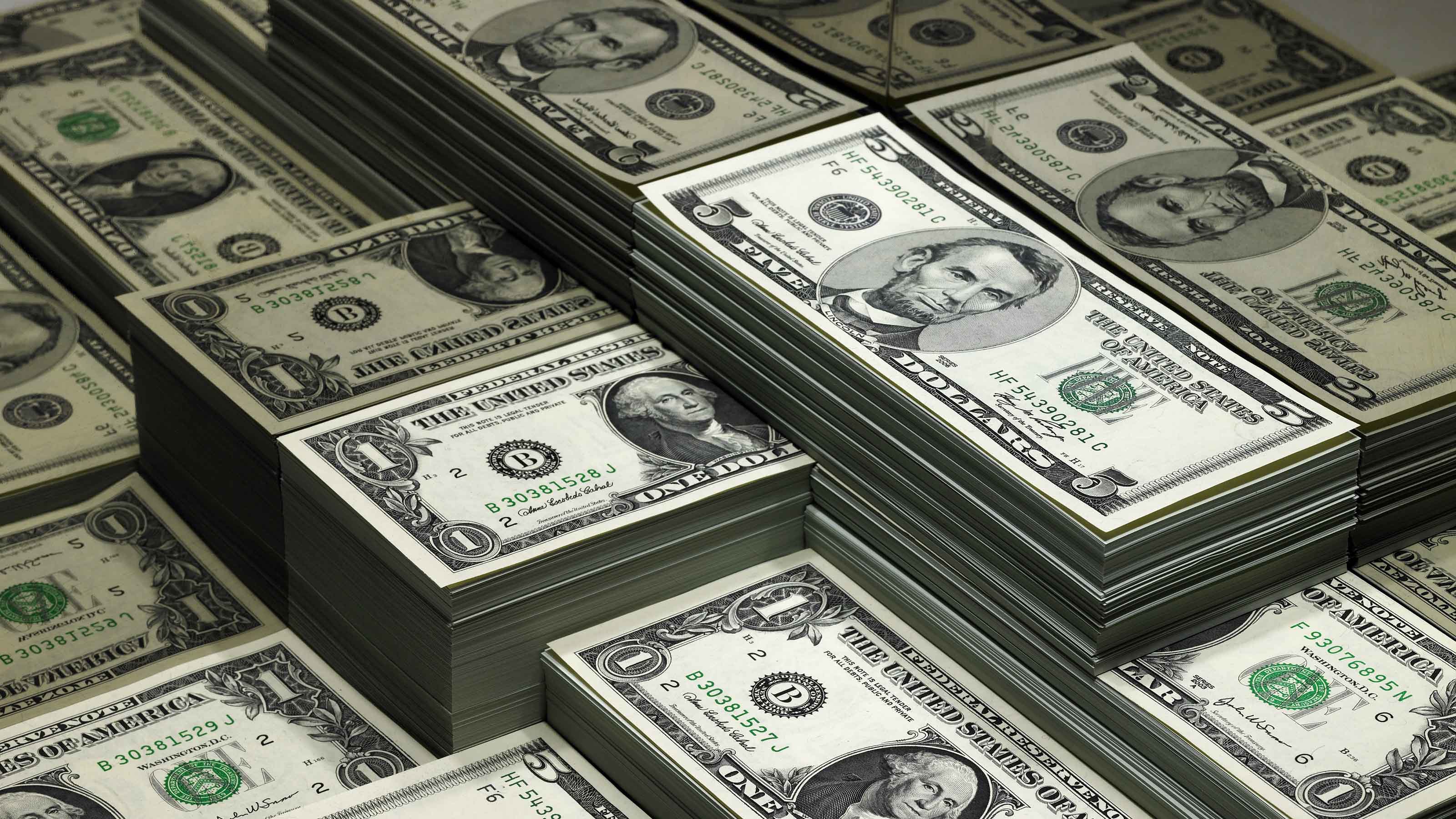10 High-Quality Stocks With Dividend Yields of 4% or More
There's no shortage of stocks with dividends these days, but not all of them are worth chasing. Here's a list of top-rated, high-yielding names to consider.


It's hard to criticize markets for setting records seemingly every other day, but all-time highs do pose something of a challenge for yield-hungry income investors: High-quality stocks with dividends that offer ample yields are in increasingly short supply.
As dividend (and bond) investors know all too well, prices and yields move in opposite directions. With the S&P 500 gaining 37% over the past 52 weeks – not to mention two consecutive quarters of negative dividend growth – the yield on the benchmark index is plumbing depths not seen for two decades.
Indeed, the yield on the S&P 500 sits at just 1.34%, according to data from Quandl, down from 1.91% a year ago. To put today's levels in historical perspective, the market's dividend yield hasn't touched such lows since 2001.
For the record, the dividend yield on the S&P 500 hit an all-time bottom of 1.11% in the third quarter of 2000.
Although income investors should be wary of "chasing yield" in any market environment, that admonishment goes double today. After all, it's an especially tempting risk to take when yields are from hunger.
True, there's no shortage of stocks with dividends offering high-single-digit percent and even double-digit percent yields, but a too-high yield can sometimes be a sign that the underlying company is in trouble. As such, it's imperative that investors keep a keen eye on the stability and reliability of their dividend-paying stocks – not just the generosity of their payouts.
To that end, we scoured the market for analysts' favorite high-quality stocks with dividends yielding at least 4%. We limited ourselves to stocks with strong fundamentals, stable cash flows and reassuring payout records, among other factors.
With the exception of one stock on our list, all of our names are members of the S&P 500. Most importantly, each and every one has a consensus Buy recommendation from Wall Street analysts.
A note on how the recommendation system works: S&P Global Market Intelligence surveys analysts' stock calls and scores them on a five-point scale, where 1.0 equals a Strong Buy and 5.0 is a Strong Sell. Any score equal to or less than 2.5 means that analysts, on average, rate the stock as being Buy-worthy. The closer a score gets to 1.0, the higher conviction the Buy recommendation.
After sifting through scores of names, these high-quality dividend stocks stood out for their generous payouts, solid fundamentals and analysts' recommendations. Read on to learn more about 10 attractive stocks with dividends yielding at least 4%.
Stock prices, analysts' recommendations and other data as of July 9, courtesy of S&P Global Market Intelligence, unless otherwise noted. Stocks are listed by strength of analysts' Buy calls, from lowest to highest.

LyondellBasell Industries
- Market value: $34.3 billion
- Dividend yield: 4.4%
- Analysts' consensus recommendation: 2.33 (Buy)
Shares in LyondellBasell Industries (LYB, $102.73) are lagging the broader market for the year-to-date. Although current shareholders might be somewhat disappointed, analysts say LYB's underperformance affords long-term investors a chance to buy a high-quality dividend stock at a bargain price.
The commodity chemicals giant known for polyethylene – the generic clear plastic used to make bags and many other products – is benefitting from especially "robust fundamentals," bullish analysts say.
"Tight supply, strong customer-driven demand and recovery in durable goods markets continue to lead to strong pricing and margin expansion," writes Jefferies analyst Laurence Alexander, who rates shares at Buy. "The strong momentum should continue through the rest of the year as demand lifts on successful vaccine rollout, stimulus package, restocking and pent-up demand."
Meanwhile, shares look like a bargain. LYB trades at just 6.4 times analysts' next-12-months earnings estimate, according to S&P Global Market Intelligence. That's about 33% below the stock's own five-year average, per Refinitiv Stock Reports Plus.
The valuation of 6.4 times expected earnings also looks like a good deal in light of the Street's sluggish long-term growth forecast. Analysts estimate average annual earnings per share (EPS) growth of 5.5% over the next three to five years.
And then there's the generous – and rising – dividend. In June, LyondellBasell declared a 7.6% increase in the quarterly payout to $1.13 per share. The hike puts the company on track for an 11th consecutive year of annual dividend growth.
Analysts' consensus recommendation comes to Buy, albeit with less-than-spectacular conviction. Of the 21 analysts issuing opinions on LyondellBasell tracked by S&P Global Market Intelligence, six rate it at Strong Buy, three say Buy, 11 have it at Hold and one calls it a Sell.

Huntington Bancshares
- Market value: $21.1 billion
- Dividend yield: 4.2%
- Analysts' consensus recommendation: 2.22 (Buy)
Huntington Bancshares (HBAN, $14.27) is another one of the buy-rated stocks with dividends that boasts a generous yield and is trading on the cheap after a period of share-price underperformance, analysts say.
The regional bank's stock is lagging the S&P 500 so far in 2021, partly over concerns about integrating its $22 billion all-stock acquisition of TCF Financial. Indeed, Raymond James analyst David Long upgraded HBAN in June, citing "overblown" concerns about the deal.
"We are upgrading Huntington shares from Outperform to Strong Buy as we believe recent weakness in its share price is undeserved," Long writes in a note to clients. "We are incrementally bullish on HBAN shares, as we believe the current discounted valuation represents an attractive entry point for a bank that consistently generates positive operating leverage and superior profitability metrics, which should be further enhanced by the acquisition of TCF."
Long is hardly alone in his outlook. Wedbush Securities includes Huntington Bancshares on its Best Ideas List as a top regional bank pick.
More cautiously, Argus Research rates HBAN at Hold, citing pressure on loan quality in a low-interest-rate environment. Looking farther down the road, however, analysts Kevin Heal and Taylor Conrad do acknowledge the wisdom of the bank's expansion strategy.
"HBAN continues to grow its presence in its Midwest service area, which will be helped by its planned merger with Detroit-based TCF Financial," the analysts write.
Of the 18 analysts covering the financial stock tracked by S&P Global Market Intelligence, five rate HBAN at Strong Buy, four say Buy and nine have it at Hold. They forecast the bank to deliver average annual EPS growth of nearly 43% over the next three to five years.

Chevron
- Market value: $200.7 billion
- Dividend yield: 5.1%
- Analysts' consensus recommendation: 2.11 (Buy)
Chevron (CVX, $104.07), the lone energy stock in the Dow Jones Industrial Average, is rising sharply along with the rest of the sector in 2021, and analysts see more upside ahead.
Although energy prices aren't expected to make huge upside moves over the next year, the outlook for oil and gas is much improved and should only get better as the global economy recovers from the depths of the pandemic, analysts say.
Indeed, CVX was able to take advantage of the worst of the industry's woes in July 2020 by acquiring Noble Energy in a $5 billion all-stock transaction.
Chevron, like the rest of the oil and gas industry, has been forced to double down on capital spending cuts and other cost savings as it grapples with unpredictable energy prices. And it's a strategy the oil major has the wherewithal to pull off – or at least, so say the pros.
"In this volatile energy environment, a company's balance sheet strength and place on the cost curve are critical, and favor integrated oil companies that are well positioned to manage a potentially long period of volatile oil prices," writes Argus Research analyst Bill Selesky (Buy). "CVX is one of these companies as it benefits from best-in-class production growth, industry-low operating costs, and a strong balance sheet."
The analyst adds that the dividend, which yields more than 5%, is "safe and sustainable," and he expects Chevron to resume stock buybacks in the near term.
When it comes to stocks with dividends, the pros are generally bullish on this one. Nine analysts rate CVX at Strong Buy, seven say Buy and 12 rate it at Hold, per S&P Global Market Intelligence. They project the company to generate average annual EPS growth of 23.5% over the next three to five years, thanks to easy year-over-year comparisons.

Realty Income
- Market value: $26.8 billion
- Dividend yield: 4.1%
- Analysts' consensus recommendation: 2.05 (Buy)
Real estate investment trusts (REITs) are required to distribute 90% of their taxable income every year. That makes them some of the most steady and generous dividend vehicles for income investors.
But Realty Income (O, $68.87) is no ordinary REIT. Not only does O offer a reliable stream of income; it's also an example of that rare breed of monthly dividend stocks.
The company owns more than 6,500 commercial real estate properties that are leased out to more than 630 tenants – including Walgreens (WBA), 7-Eleven, FedEx (FDX) and Dollar General (DG) – operating in 51 industries.
The firm generates predictable cash flow thanks to the long-term nature of its leases. In turn, that's helped Realty Income deliver compound average annual dividend growth of 4.4% since 1994.
Most recently, in June, the company announced a dividend increase to 23.55 cents per share from 23.5 cents per share. O has delivered 612 consecutive monthly dividend payments to date, including 111 consecutive quarterly increases.
Indeed, O's dividend-growth streak has earned it admission to the S&P 500 Dividend Aristocrats, a list of stocks that have increased their payouts annually for at least 25 consecutive years.
The reliable income stream and potential for price appreciation prompts the Street to give Realty Income a consensus recommendation of Buy. Seven analysts rate the stock at Strong Buy, four say Buy and eight have it at Hold.
"The company has one of the sector's strongest balance sheets, in our view, lowest costs of capital and pays a consistent and growing monthly dividend," writes Stifel analyst Simon Yarmak (Buy).
The analyst also applauds Realty Income's pending acquisition of Vereit (VER). The $11 billion all-stock deal was announced in April.

Medical Properties Trust
- Market value: $12.1 billion
- Dividend yield: 5.5%
- Analysts' consensus recommendation: 1.92 (Buy)
Medical Properties Trust (MPW, $20.50) has been on a buying binge in 2021, further ensconcing itself as one of the largest hospital-owners in the world.
The healthcare REIT's most recent acquisition – it paid $900 million to buy five South Florida hospitals from Tenet Healthcare (THC) in late June – brought its year-to-date spending spree to more than $3.4 billion.
Other 2021 acquisitions include a $950 million deal for 18 inpatient behavioral health hospitals located across the U.S., and the £800 million purchase of a portfolio of behavioral health facilities in the U.K.
The whirlwind of M&A activity leaves MPW as the owner of 444 facilities and approximately 47,000 licensed beds in nine countries.
Although the market appears uncomfortable with the way MPW has been whipping out the checkbook – shares are negative for the year-to-date – analysts are mostly confident the expansion efforts will pay off.
Stifel, for one, reiterated its Buy rating after MPW announced its $950 million deal for the 18 behavioral health facilities.
"The REIT remains one of our favorite growth stories, as management continues to find attractive acquisition opportunities," wrote Stifel analyst Stephen Manaker. "MPW has a long runway for above-average growth driven by a strong pipeline of acquisition targets with limited competition, improving portfolio diversification by geography and an attractive macro environment."
Stifel's view is the majority opinion on the Street. Six analysts call MPW a Strong Buy, two say Buy and five have it at Hold, per S&P Global Market Intelligence.
As for its place on this list of the best stocks with dividends, as much as analysts like MPW for its share-price potential, income investors should take note of its generous – and rising – payout. Medical Properties Trust has increased its dividend for eight consecutive years.

AbbVie
- Market value: $205.9 billion
- Dividend yield: 4.5%
- Analysts' consensus recommendation: 1.83 (Buy)
AbbVie (ABBV, $116.58) is best known for blockbuster drugs such as Humira, a rheumatoid arthritis treatment on pace to surpass Lipitor as the best-selling drug of all time. However, analysts are increasingly excited about what's in the pharma company's pipeline.
Humira has been approved for numerous other ailments. AbbVie also makes cancer drug Imbruvica, as well as testosterone replacement therapy AndroGel. But the real future upside in ABBV stock hinges on cancer-fighting and immunology drugs, as well as therapies acquired from Allergan in a $63 billion deal that closed in 2020.
"The current portfolio includes a growing oncology franchise anchored by Imbruvica and Venclexta, along with two growth drivers in the immunology space – Skyrizi and Rinvoq," says Argus Research analyst David Toung (Buy). "Allergan adds strengths in medical aesthetics, neuroscience and eyecare."
Another draw for investors is the biopharma firm's storied dividend history.
AbbVie is also a member of the S&P 500 Dividend Aristocrats. The company hiked its payout for a 49th consecutive year in October 2020 – a 10.2% bump in the quarterly distribution to $1.30 per share. AbbVie notes that since its inception in 2013, it has increased its quarterly dividend by 225%.
There's also something comforting about having the imprimatur of the Oracle of Omaha. Warren Buffett's Berkshire Hathaway (BRK.B) has been a shareholder since the third quarter of 2020.
As for Wall Street's opinion toward this high-quality dividend stock, analysts' consensus recommendation of Buy comes with fairly high conviction. Eleven research pros rate ABBV at Strong Buy, seven say Buy, five call it a Hold and one says Sell.

Edison International
- Market value: $22.4 billion
- Dividend yield: 4.6%
- Analysts' consensus recommendation: 1.76 (Buy)
Utility stocks are known for their reliable dividends, not their potential for share-price outperformance. But if the Street's forecast is on target, Edison International (EIX, $58.28) is poised to deliver on both fronts in the year ahead.
EIX is the parent company of Southern California Edison, a utility that delivers electricity to 15 million people across Southern, Central and Coastal California. Another sweltering summer and the ever-present fear of wildfires engulfing the Golden State have pushed EIX into negative territory for the year-to-date.
But analysts say the market's anxiety is overwrought, making this one of the stocks with dividends that is simply too much of a bargain to ignore.
"Despite concerns about the possible return of wildfires that impacted the company’s service area last summer, we note that Edison continues to invest in new technology to prevent wildfire damage," writes Argus Research analyst Gary Hovis. "We also have a positive view of the company’s favorable regulatory environment, and improving financial strength."
The bull case largely hinges on valuation, however, notes Argus Research. EIX trades at just 12.2 times analysts' average 2022 earnings estimate, per Refinitiv Stock Reports Plus. That's "below the average multiple for comparable electric utilities with fully regulated operations," writes Argus' Hovis.
Indeed, per Refinitiv, EIX trades at a whopping 36% discount to its electric industry peers on an estimated earnings basis. It trades at a steep 19% discount to its own five-year average expected earnings multiple, as well.
That helps explain why nine analysts rate EIX at Strong Buy, three say Buy and five have it at Hold. Their average target price of $71.73 gives the stock implied upside of about 23% over the next 12 months.
Add in the 4.6% dividend yield, and the stock's total-return potential speaks for itself.

Valero Energy
- Market value: $29.6 billion
- Dividend yield: 5.0%
- Analysts' consensus recommendation: 1.72 (Buy)
The energy sector is leading all comers in the S&P 500 this year and Valero Energy (VLO, $72.30) is going along for the ride. Shares in the oil and gas refiner are outpacing the broader market by double-digit percentage points and the Street expects more of the same.
Indeed, analysts' average target price of $88.18 gives VLO implied upside of nearly 22% over the next 12 months or so. That potential for price appreciation explains why analysts have a fairly high-conviction consensus Buy rating on the energy stock, with nine Strong Buy calls, six Buys, two Holds and one Sell.
Credit Suisse analyst Manav Gupta cites "pent-up demand and above-cycle margins" as part of his Outperform (Buy) rating on Valero Energy.
"VLO remains our top pick in refining," writes Gupta in a note to clients. "Refiners are indicating that both gasoline and diesel demand have already normalized in their systems, which is very positive as a number of states have still not fully lifted all restrictions. We believe the third quarter of 2021 is setting up for margin levels which are well above normalized levels."
Over at Argus Research, analyst Bill Selesky says VLO's characteristics make it attractive for both more tactical and long-term investors.
"We expect rising demand for gasoline during a strong summer driving season, as well as increased demand for diesel and jet fuel. We also look for improved refining margins," writes Selesky (Buy). "Over the long term, we expect Valero to benefit from its size, scale and diversified business portfolio, which includes refining, midstream, chemicals, and marketing and specialty operations."
VLO last raised its dividend in January 2020, by 8.9% to 98 cents per share.

The Williams Companies
- Market value: $32.4 billion
- Dividend yield: 6.3%
- Analysts' consensus recommendation: 1.57 (Buy)
The Williams Companies (WMB, $26.70), which operates interstate gas pipelines, is seeing its share price soar as the post-pandemic economic recovery takes hold.
Indeed, the energy infrastructure stock is up by about 30% for the year-to-date, and analysts think a recent acquisition should lead to another leg up.
Credit Suisse analyst Spiro Dounis, who rates WMB at Outperform (Buy), says WMB's purchase of Sequent Energy Management "could be a source of upside" and expects the energy trader's "cash flow contribution to exceed expectations."
Williams closed its $50 million deal for Sequent in early July.
After all, energy infrastructure plays are all about cash flows, and that's what makes WMB especially attractive to Stifel.
"We view the company’s financial profile conservatively, with top-tier distribution coverage and an investment grade rated balance sheet," writes Stifel analyst Selman Akyol (Buy). "Despite macro headwinds, Williams' cash flows should remain stable and [it] remains a good yield vehicle for investors."
Argus Research concurs, upgrading WMB to Buy from Hold in May, citing the company's three long-haul natural gas pipelines "that are largely protected by long-term, take-or-pay contracts," which help reduce commodity price risk.
"We expect continued growth in natural gas demand over the next several years, despite some replacement of gas by renewables," writes Argus' Bill Selesky.
As for stocks with dividends go, the great majority of analysts are solidly bullish on this one. Of the 23 analysts covering the stock tracked by S&P Global Market Intelligence, 13 rate it at Strong Buy, seven say Buy and three have it at Hold.

Gaming and Leisure Properties
- Market value: $10.9 billion
- Dividend yield: 5.8%
- Analysts' consensus recommendation: 1.50 (Strong Buy)
Gaming and Leisure Properties (GLPI, $46.85) is an analyst favorite among casino REITs thanks to both a snazzy dividend yield and attractive growth prospects coming out of the pandemic.
Indeed, among our list of best stocks with dividends, it's the only one to snag a consensus recommendation of Strong Buy. (It's also the only stock on our list that's not a member of the S&P 500.) Of the 18 analysts covering GLPI tracked by S&P Global Market Intelligence, 12 rate it at Strong Buy, three say Buy and three have it at Hold.
The company, whose properties include the Belle of Baton Rouge and Argosy Casino Riverside in Missouri, is benefitting from a stampede of gamblers returning to casinos.
"Demand at the regional casinos continues to beat all expectations with some properties delivering all-time-high top-line revenues," writes Raymond James analyst RJ Milligan, who rates GLPI at Strong Buy. "With zero exposure to the Las Vegas Strip, GLPI's assets have seen a stronger recovery than the other gaming REITs."
Stifel's Simon Yarmak (Buy) is also in the bull camp, noting that GLPI has "an attractive portfolio of regional assets, which has returned to strong operating performance. Additionally, the company has started to make acquisitions."
Lastly, Mizuho Securities initiated coverage of Gaming and Leisure Properties at Buy in late March, citing its unique attributes in an industry set to benefit from a recovery in consumer spending and gaming revenue.
"GLPI is the most diversified of the three Gaming REITs, with strong underlying tenant credit and structural lease enhancements, resulting in a lower-risk platform that we believe is under-appreciated by the market," writes Mizuho analyst Haendel St. Juste.
An added bonus for income investors: GLPI's dividend yield of 5.8% towers over that of the wider equity REIT sector, which stands at a bit less than 3%, according to industry association Nareit.
Profit and prosper with the best of Kiplinger's advice on investing, taxes, retirement, personal finance and much more. Delivered daily. Enter your email in the box and click Sign Me Up.

Dan Burrows is Kiplinger's senior investing writer, having joined the publication full time in 2016.
A long-time financial journalist, Dan is a veteran of MarketWatch, CBS MoneyWatch, SmartMoney, InvestorPlace, DailyFinance and other tier 1 national publications. He has written for The Wall Street Journal, Bloomberg and Consumer Reports and his stories have appeared in the New York Daily News, the San Jose Mercury News and Investor's Business Daily, among many other outlets. As a senior writer at AOL's DailyFinance, Dan reported market news from the floor of the New York Stock Exchange.
Once upon a time – before his days as a financial reporter and assistant financial editor at legendary fashion trade paper Women's Wear Daily – Dan worked for Spy magazine, scribbled away at Time Inc. and contributed to Maxim magazine back when lad mags were a thing. He's also written for Esquire magazine's Dubious Achievements Awards.
In his current role at Kiplinger, Dan writes about markets and macroeconomics.
Dan holds a bachelor's degree from Oberlin College and a master's degree from Columbia University.
Disclosure: Dan does not trade individual stocks or securities. He is eternally long the U.S equity market, primarily through tax-advantaged accounts.
-
 Forget FIRE: Why ‘FILE’ Is the Smarter Move for Child-Free DINKs
Forget FIRE: Why ‘FILE’ Is the Smarter Move for Child-Free DINKsHow shifting from "Retiring Early" to "Living Early" allows child-free adults to enjoy their wealth while they’re still young enough to use it.
-
 7 Tax Blunders to Avoid in Your First Year of Retirement
7 Tax Blunders to Avoid in Your First Year of RetirementA business-as-usual approach to taxes in the first year of retirement can lead to silly trip-ups that erode your nest egg. Here are seven common goofs to avoid.
-
 How to Plan for Social Security in 2026's Changing Landscape
How to Plan for Social Security in 2026's Changing LandscapeNot understanding how the upcoming changes in 2026 might affect you could put your financial security in retirement at risk. This is what you need to know.
-
 Stocks Struggle for Gains to Start 2026: Stock Market Today
Stocks Struggle for Gains to Start 2026: Stock Market TodayIt's not quite the end of the world as we know it, but Warren Buffett is no longer the CEO of Berkshire Hathaway.
-
 Stocks End Volatile Year on a Down Note: Stock Market Today
Stocks End Volatile Year on a Down Note: Stock Market TodayAfter nearing bear-market territory in the spring, the main market indexes closed out the year with impressive gains.
-
 Stocks Extend Losing Streak After Fed Minutes: Stock Market Today
Stocks Extend Losing Streak After Fed Minutes: Stock Market TodayThe Santa Claus Rally is officially at risk after the S&P 500's third straight loss.
-
 Santa Claus Rally at Risk as Tech Stocks Slump: Stock Market Today
Santa Claus Rally at Risk as Tech Stocks Slump: Stock Market TodayThe Nasdaq Composite and Dow Jones Industrial Average led today's declines as investors took profits on high-flying tech stocks.
-
 Gold and Silver Shine as Stocks Chop: Stock Market Today
Gold and Silver Shine as Stocks Chop: Stock Market TodayStocks struggled in Friday's low-volume session, but the losses weren't enough to put the Santa Claus Rally at risk.
-
 The Santa Claus Rally Officially Begins: Stock Market Today
The Santa Claus Rally Officially Begins: Stock Market TodayThe Santa Claus Rally is officially on as of Wednesday's closing bell, and initial returns are positive.
-
 'Humbug!' Say Consumers, Despite Hot GDP: Stock Market Today
'Humbug!' Say Consumers, Despite Hot GDP: Stock Market Today"The stock market is not the economy," they say, but both things are up. Yet one survey says people are still feeling down in the middle of this complex season.
-
 Stocks Rise to the Spirit of the Season: Stock Market Today
Stocks Rise to the Spirit of the Season: Stock Market TodayInvestors, traders and speculators are beginning to like the looks of a potential year-end rally.
